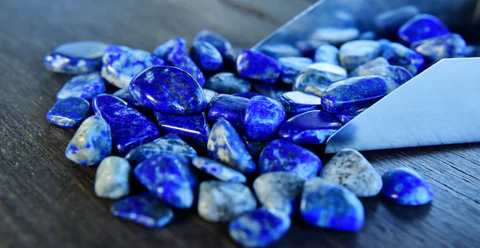Table of Contents
Introduction
Throughout history, gemstones have captivated the human imagination with their beauty, rarity, and purported mystical properties. Ancient cultures revered certain gemstones not only for their aesthetic appeal but also for their symbolic and spiritual significance. These rare gemstones often played crucial roles in rituals, adornments, and the establishment of power. Exploring how different ancient cultures valued and utilized these precious stones provides insight into their social, religious, and economic practices.

The Significance of Gemstones in Ancient Civilizations
Gemstones have been prized across civilizations for millennia, serving as symbols of status, wealth, and divine favor. They were often associated with various deities and were believed to possess protective or healing properties. The allure of these gemstones extended beyond their physical beauty, embedding them deeply into the spiritual and cultural fabric of ancient societies.
Ancient Egypt: The Reverence for Lapis Lazuli
In ancient Egypt, lapis lazuli was one of the most coveted gemstones. This deep blue stone, often speckled with gold flecks, was associated with the heavens and the divine. The ancient Egyptians believed lapis lazuli had protective and healing properties, making it a popular choice for amulets, jewelry, and burial artifacts.
Lapis lazuli was used extensively in the adornments of pharaohs and the elite, including in the famous mask of Tutankhamun. The stone&8217;s significance extended to its use in various ceremonial objects and religious artifacts, reflecting its esteemed status in Egyptian culture. The trade routes that brought lapis lazuli from Afghanistan to Egypt illustrate the gemstone&8217;s importance and the complex networks of ancient commerce.
Mesopotamia: The Legacy of Carnelian
In the ancient Mesopotamian civilizations, carnelian was highly prized for its vibrant orange-red hue. This gemstone was often used in seals and amulets, which held both practical and symbolic value. The Mesopotamians believed carnelian had the power to bring courage, protection, and fertility.
Carnelian was frequently carved into intricate designs and used as a medium for personal seals, which were pressed into clay to create official documents. These seals often bore the names and titles of their owners, indicating their social status and the gemstone&8217;s role in administrative and religious practices. The popularity of carnelian in Mesopotamian culture reflects the gemstone&8217;s integral role in both daily life and spiritual practices.

India: The Mystical Properties of Blue Sapphire
In ancient India, blue sapphire (known as neelam) was considered one of the most powerful gemstones. According to Hindu astrology, the blue sapphire was associated with the planet Saturn and was believed to bring protection, wisdom, and prosperity to its wearer. It was often used in royal jewelry and religious artifacts, underscoring its importance in both secular and sacred contexts.
The blue sapphire was also a symbol of divine favor and was used in the crowns and adornments of Indian royalty. Ancient texts and inscriptions highlight the gemstone&8217;s esteemed place in Indian culture and its significance in rituals and ceremonies. The reverence for blue sapphire in ancient India reflects the broader cultural belief in the mystical and transformative power of gemstones.
Greece and Rome: The Enduring Appeal of Emeralds
Emeralds were highly valued in both ancient Greece and Rome, symbolizing rebirth, fertility, and eternal youth. The ancient Greeks believed emeralds were linked to the goddess Venus, the embodiment of love and beauty. As such, emeralds were often used in jewelry worn by both men and women, and were thought to enhance the wearer’s attractiveness and charisma.
In Rome, emeralds were equally prized, often used in high-status rings and other adornments. Roman writers and historians, such as Pliny the Elder, extolled the virtues of emeralds, noting their clarity and vivid color. The gemstone&8217;s association with Venus and its esteemed status in Roman society underscore the enduring appeal and cultural significance of emeralds across these classical civilizations.
China: The Reverence for Jade
Jade has held a special place in Chinese culture for over 5,000 years, revered not only for its beauty but also for its symbolic and spiritual significance. In ancient China, jade was associated with immortality, purity, and moral integrity. It was often used in burial artifacts, ceremonial objects, and personal ornaments, reflecting its importance in both life and death.
The ancient Chinese believed jade had the power to protect against evil and promote harmony and balance. The stone was frequently carved into intricate designs and used in various ritual objects, including the famous jade burial suits worn by elite individuals. The long-standing reverence for jade in Chinese culture highlights the gemstone&8217;s deep spiritual and cultural significance.

The Legacy of Rare Gemstones
The historical significance of rare gemstones in ancient cultures underscores their role as symbols of power, protection, and spirituality. These gemstones were more than mere adornments; they were imbued with meanings that transcended their physical properties. From the lapis lazuli of Egypt to the jade of China, the legacy of these gemstones reflects their profound impact on the cultural and spiritual practices of ancient civilizations.
As we study the use of gemstones in ancient cultures, we gain insight into the values and beliefs that shaped these societies. The continued fascination with these rare stones, and their enduring presence in art and artifacts, speaks to their timeless allure and the universal human desire to connect with the divine and the extraordinary.
